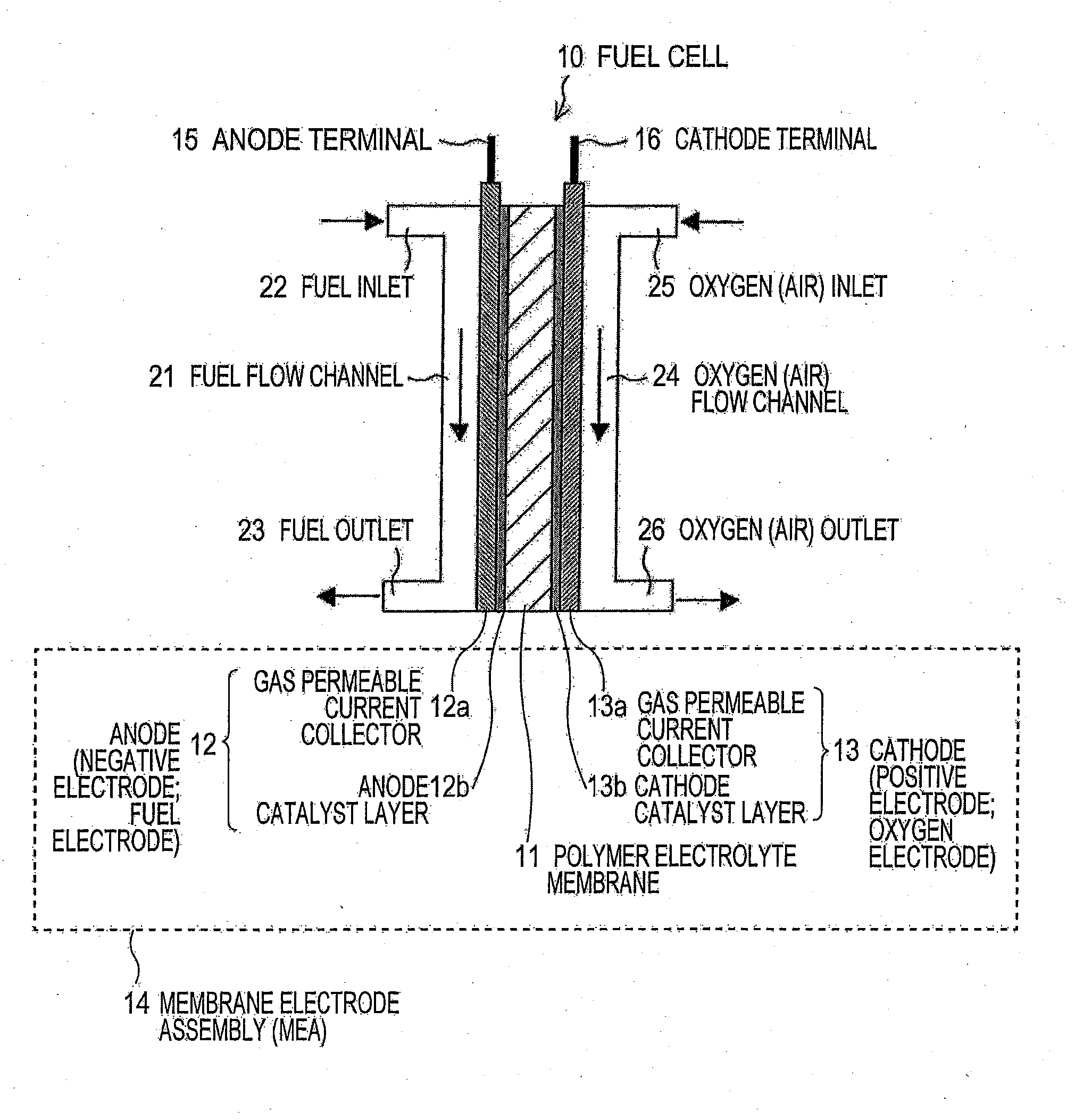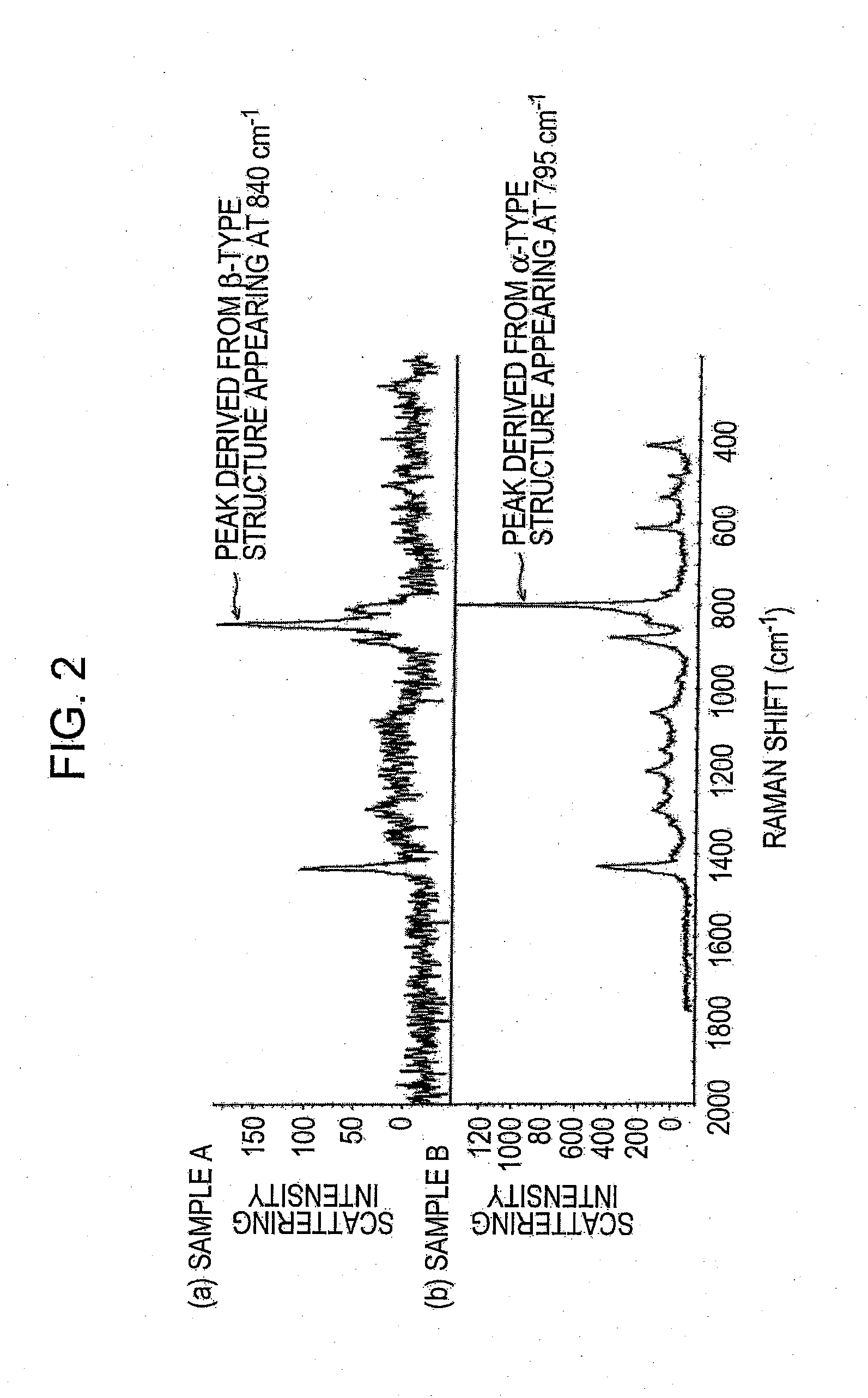Ion-conductive composite, membrane electrode assembly (MEA), and electrochemical device
- Summary
- Abstract
- Description
- Claims
- Application Information
AI Technical Summary
Benefits of technology
Problems solved by technology
Method used
Image
Examples
first embodiment
[0042]In a first embodiment, examples of ion-conductive composites according to Claims 1 to 10 will be mainly described.
[0043]In order to produce an ion-conductive composite according to the first embodiment of the present invention, first, a carbon cluster derivative having an ion-dissociative group is added to an appropriate organic solvent and uniformly dispersed by stirring. Then, powder of a vinylidene fluoride homopolymer or copolymer is added to the resulting dispersion liquid, followed by stirring to prepare a coating liquid. Next, the coating liquid thus prepared is uniformly spread over a substrate to form a coating film. The solvent is gradually evaporated from the coating film, thereby to produce a film-like, ion-conductive composite.
[0044]The thickness of the ion-conductive composite film can be controlled by changing the concentration of the coating liquid to be applied and the coating amount per unit area, or the like.
[0045]Furthermore, as the organic solvent, cyclope...
second embodiment
[0061]In a second embodiment, there will be mainly described membrane electrode assemblies (MEAS) according to Claims 11 to 13 and an example in which an ion-conductive composite produced in the first embodiment is applied to the fuel cell 10 described with reference to FIG. 4, as an example of an electrochemical device.
[0062]A hydrogen ion-conductive composite film produced in the first embodiment is cut into an appropriate planar shape. The resulting film is interposed between an anode 22 and a cathode 23, and press-bonding under heating is performed, for example, at a temperature of 130° C. under a pressure of 0.5 kN / cm2 for 15 minutes, to produce a membrane electrode assembly 14.
[0063]The membrane electrode assembly (MEA) 14 is sandwiched between a fuel flow channel 21 and an oxygen (air) flow channel 24 and integrated into a fuel cell 10, as described with reference to FIG. 4. When electricity is generated, on the anode 12 side, a fuel, such as hydrogen, is supplied from a fuel...
example 1
Production of Hydrogen Ion-Conductive Composite Film
[0066]As a carbon cluster derivative, an appropriate amount of a fullerene-based proton-conductive polymer represented by the structural formula (1) below was added to γ-butyrolactone (manufactured by Wako Pure Chemical Industries, Ltd., special grade) and uniformly dispersed by stirring for 2 hours. Powder of a copolymer P(VDF-HFP) of vinylidene fluoride and hexafluoropropane was added to the resulting dispersion liquid, and as necessary, an appropriate amount of solvent was further added, followed by stirring for 3 hours or more with the temperature being kept at 80° C. to achieve uniform dispersion. In this process, Sample A of P(VDF-HFP) including PVDF predominantly having the β-type crystal structure, which has been described as the characteristic of the present invention with reference to FIGS. 1 and 2, was used.
[0067]Structural formula (1) of fullerene-based proton-conductive polymer:
[0068]Next, the coating liquid thus prepa...
PUM
 Login to View More
Login to View More Abstract
Description
Claims
Application Information
 Login to View More
Login to View More - R&D
- Intellectual Property
- Life Sciences
- Materials
- Tech Scout
- Unparalleled Data Quality
- Higher Quality Content
- 60% Fewer Hallucinations
Browse by: Latest US Patents, China's latest patents, Technical Efficacy Thesaurus, Application Domain, Technology Topic, Popular Technical Reports.
© 2025 PatSnap. All rights reserved.Legal|Privacy policy|Modern Slavery Act Transparency Statement|Sitemap|About US| Contact US: help@patsnap.com



